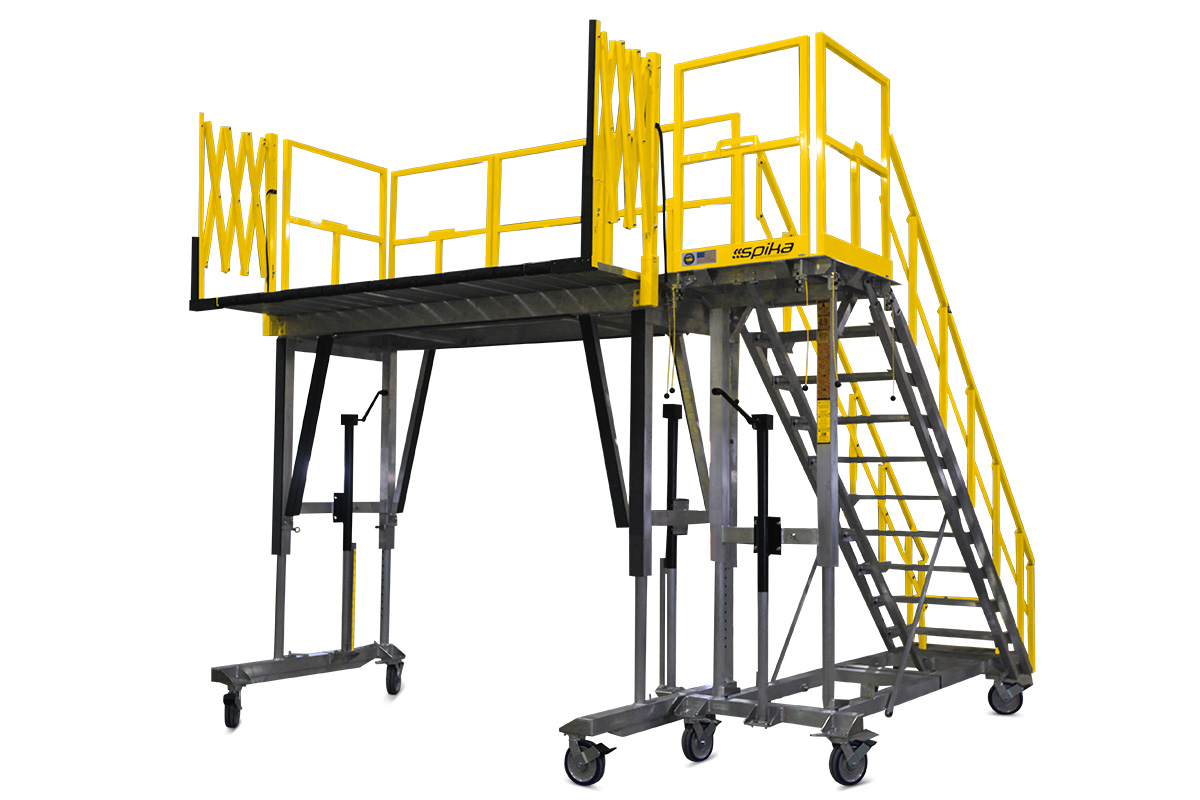A ‘Safety State of Mind’ in Factories
Ensuring safe and productive access for workers in factories is paramount. This article explores a new approach to industrial design that prioritizes worker well-being and ergonomics, ultimately leading to a safer and more efficient work environment
As production lines evolve and processes are refined, a continuous learning curve exists with safe and ergonomic access. A significant challenge lies in overcoming the inherent human tendency to rely on makeshift solutions – we often underestimate the limitations of the human body and overestimate our reach capabilities. This can lead to a variety of musculoskeletal disorders (MSDs) and potential safety incidents.
The Pitfalls of Makeshift Solutions
The cornerstone of a safety-focused approach lies in anticipating potential hazards. This proactive strategy involves considering scenarios where workers might overreach to access equipment, contort themselves into awkward positions for maintenance tasks, or attempt unsafe maneuvers due to obstructed walkways or poorly designed workstations. By employing principles of human factors engineering during the design phase, these risks can be mitigated before they ever materialize.
Learning from Industry Leaders: A Case Study in Safety
A recent conversation with a Health, Safety, Security, and Environmental (HSSE) Manager at a leading-edge manufacturing company yielded valuable insights on fostering a Safety State of Mind. Here are seven key principles gleaned from their experience:
- Safety by Design: Integration of safety considerations from the outset is crucial. EH&S professionals should be involved during the design phase of production lines and buildings, not just as a checkbox exercise. The focus should extend beyond simply meeting regulatory requirements to actively considering human factors like reach limitations, posture demands, and potential pinch points.
- Human-Centric Design Principles: The big shift in industrial design is addressing the question, “Is this appropriate for the human body?” This approach necessitates a shift from a purely mechanical perspective to one that prioritizes worker well-being. Factors like worker posture during operation, the duration of physical exertion required, and the center of gravity during various tasks all need to be evaluated and optimized for ergonomic efficiency.
- Subjective Observation: Not all safety hazards are readily apparent during the initial design phase. Safety personnel and operations teams should actively observe workers performing their duties. This includes establishing clear communication channels to encourage workers to report potential safety concerns without fear of reprisal. By fostering a culture of open communication, companies can identify and address unforeseen ergonomic risks before they lead to injuries.
- Ergonomics and Worker Wellness: Leading companies recognize the strong link between ergonomics and worker health. Undue pressure on joints, ligaments and bones in different positions lead to injuries and accidents. Innovative companies actively assess potential ergonomic risks and conduct regular assessments to identify and address potential issues before they can occur. Annual ergonomic assessments where employees are interviewed get supplemented by spot checks and even having informal conversations with prompts such as, “Do you get sore?”, viz., the practice of behavior-based safety.
- A Culture of Compliance: A manufacturing line must stay compliant with regulations. However, some companies go beyond the minimum requirements, establishing a culture of continuous improvement in safety practices.
- Accommodating Desire paths: Safety equipment should be designed not just for its intended purpose, but also for how it will be used in practice. Observing workers' natural movements and tendencies when interacting with equipment can provide valuable insights for product designers. By understanding these "desire paths," manufacturers can design safety equipment that is intuitive to use and integrates seamlessly into existing workflows – in that way, improving overall worker safety.
- Safety Through Inclusion: For safety initiatives to be truly effective, they require the active participation and buy-in of the workforce. Safety must be a positive experience, ensuring that the operators are heard, and feel heard. This fosters a collaborative safety culture where workers feel empowered to participate in safety discussions and report potential hazards without fear of retribution. Without their buy-in, most safety assessments and measures may fall short of effective outcomes.
New ideas about worker safety in manufacturing and maintenance are making companies and investors optimistic. They're realizing that spending money on safety is actually an investment that benefits everyone. It not only improves profits (goes straight to the bottom line) for the shareholders, but it also ensures the wellbeing of workers.

